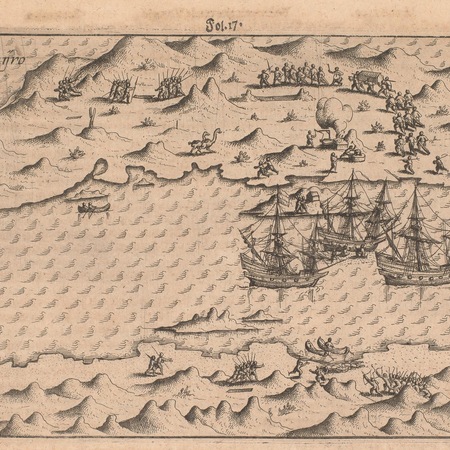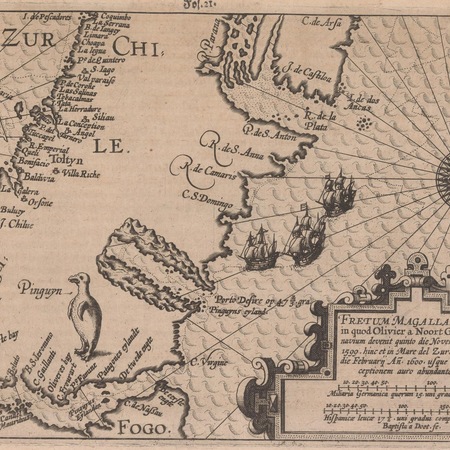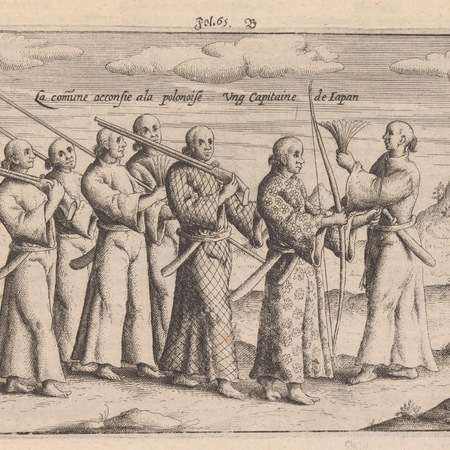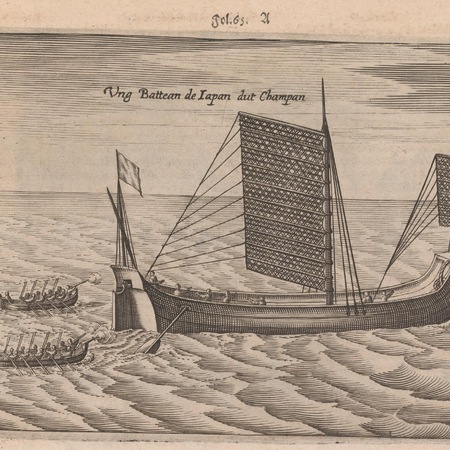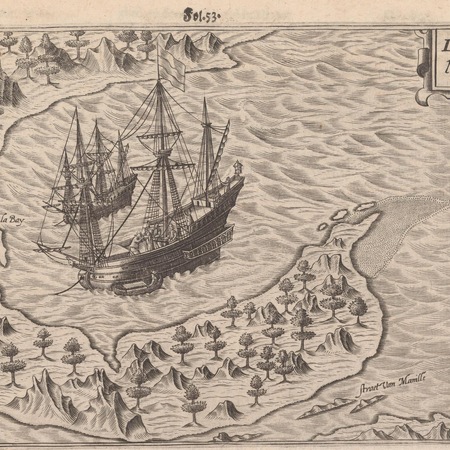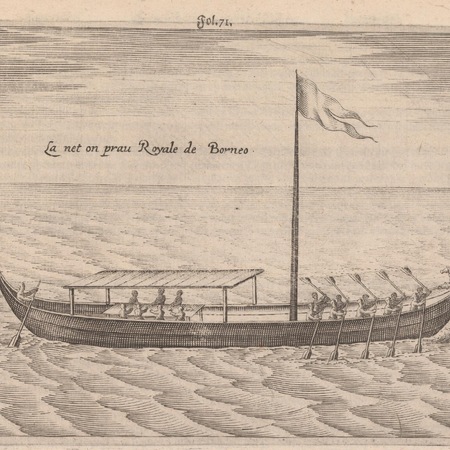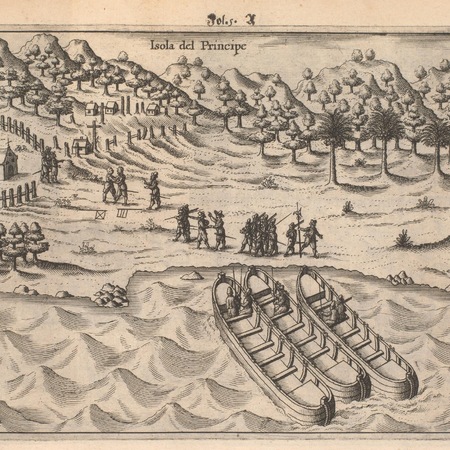In 1601 Olivier van Noort became the first Dutchman to completely circumnavigate the world. He did so as the fourth European to complete this journey, after Ferdinand Magellan, Cavendish and Francis Drake. His expedition of four ships, the Mauritius, the Frederik Hendrik, the Hoop and the Eendracht departed from Rotterdam. While Van Noort achieved a remarkable feat for the time, it was a financial disaster as he had failed to acquire trade products or to capture valuable loot from the Spanish or Portuguese.
From Texel the objective was to sail through the Strait of Magellan, to harass the Spanish settlements in South America and then to continue to the East Indies. From there the expedition was to return via the Cape of Good Hope in South Africa. The fleet first sailed along the African coast and reached the island Principe in mid-December. Here some fighting took place with the Portuguese garrison and after several days the expedition decided to leave the island to cross the Atlantic. In early February Van Noort reached the Brazilian coast at Cabo de São Tomé and continued to Rio de Janeiro. Here the Dutch fought briefly with the Portuguese garrison and after loser a few more men left the Portuguese colony.
In March a decision was made to delay the passage through the Strait of Magellan as winter was coming. The expedition attempted to find St. Helena, but missed the island. By now many of the crew were sick with scurvy and many died. The expedition anchored for some time off the Brazilian coast at St. Clara island. Here most of the scurvy patients recovered. The Eendracht was not deemed seaworthy any longer and burned. The expedition continued to the island St. Sebastian and then to Port Desire. Here three crew members who went ashore were killed by locals, who disappeared before the Dutch realized what had happened. The expedition sailed on to the Strait of Magellan. In December, on a small island in the Strait of Magellan the expedition encountered a large group of indigenous people who threw penguins at them from above and shot them with bow and arrow. The Dutch opened fire, landed ashore and killed all the men, and a number of women and children. They captured 6 children. Apparently, this was seen as revenge for the three crew killed at Port Desire.
Afterwards the Dutch made slow progress through the Strait. While passing the Strait, the Vice Admiral, was court-martialled for mutinous conduct, convicted and set ashore. The Fleet reached the Pacific Ocean in February 1601, but lost contact with the Fredrik Hendrik. The Mauritius and the Hoop continued along the shores of South America, where they captured a Spanish ship. After sailing further north past Peru, the fleet turned west to cross the Pacific Ocean without accomplishing much on the South American shores. After a brief stop at Guam, the Mauritius and Eendracht, to which Hoop was renamed, sailed to the Philippines. There they fought a battle with two Spanish ships near Manilla on 14 December 1600. The Eendracht was captured in this fight and the Mauritius under Van Noort continued on to Brunei. After failing to accomplish worthwhile trade there, Van Noort wanted to continue to Bantam, but could not reach it due to adverse winds. He sailed to East Java, remained there briefly at the port of Iurtan in January 1601 and then sailed around the island to Bantam. From there he commenced the voyage home, around the Cape of Good Hope. In August 1601 he reached the Dutch Republic. With his crew he had circumnavigated the globe, but had nothing profitable to show for it.
